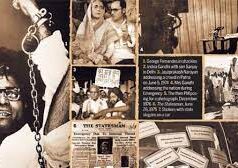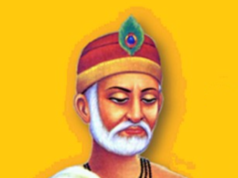
Acharya Prafulla Chandra Ray lived a life of extreme self-denial and became a symbol of plain living.
Only three months junior to Rabindra Nath Tagore, Acharya Prafulla Chandra Ray was born on August 2, 1861, in the village Raruli-Katipara in Khulna (now in Bangladesh) and died on June 16, 1944. Remarkably enough, Mahatma Gandhi was a few months junior to him – still Prafulla Chandra was a follower of Gandhiji’s ideology. In fact, Prafulla Chandra had started a campaign to propagate Khadi in the nook and corner of Bengal. A true patriot as he was, Prafulla Chandra never failed to help the revolutionaries of the country because he had full faith in their devotion and dedication to the country. His patriotism had started from the very grass roots of the country. His dress, his food, his behaviour and his everything was Indian. For teaching science, he preferred mother tongue to English language. For breakfast or lunch, he used to prefer puffed rice (in Bengali we call it Muri). His disciples used to recollect his words, why go for foreign things when alternatives are available indigenously.
The decade of 1860-69 in the nineteenth century was very important in India’s history. Thus, Animesh Chakraborty, a well-known inorganic chemist, wrote: “It was the best of times – the second half of the nineteenth century. The decade of 1860 – 69 alone saw the birth of Rabindranath Tagore, Motilal Nehru, Swami Vivekananda, Madan Mohan Malaviya, Asutosh Mookerjee, Lala Lajpat Rai, Srinivas Sastri and Mohandas Karamchand Gandhi. And of Prafulla Chandra Ray. A season of light and hope was descending on a languishing India.”
He lived a life of extreme self-denial. He became a symbol of plain living. Mahatma Gandhi said: “It is difficult to believe that the man in simple Indian dress wearing simple manners could possibly be the great scientist and professor.” He lived in a single room of University College of Science, Calcutta University. Its furniture consisted of an iron bedstead, a small table, a smaller chair and an almirah with shelves full of books, most of which are English classics. Prafulla Chandra was unmarried.
His father Harish Chandra Ray was a zamindar (landlord), who was closely associated with the cultural and intellectual leaders of those days in Bengal. For his liberal views Harish Chandra was branded a Mlechcha (foreign heretic) by his fellow villagers. Ray’s mother, Bhubanmohini Devi, was also an accomplished lady of enlightened views.
Ray’s early education was in his village school, founded by his father. However, he made very little progress in this school as he used to be frequently absent from the school. In 1870 his father permanently shifted to Calcutta mainly for proper education of his children. Describing his first impression of Calcutta, Ray, in his autobiography wrote: “In August 1870, I came to Calcutta for the first time. I spent the month of August in Calcutta, to my great joy, almost every day seeing new sights. I caught glimpses of a new world. A panorama of gorgeous vistas was opened to me. The new water-works had just been completed and the town enjoyed the blessings of a liberal supply of filtered drinking water; the orthodox Hindus still hesitated to make use of it as being impure; but the superior quality of water carried its own recommendation, by slow degrees, reason and convenience triumphed over prejudice, and its use became almost universal. The construction of underground drains had just been taken in hand.”
In 1871, Ray and elder brother Nalinikanta were admitted into the Hare School, founded by David Hare, and then located in one storey building. The school was shifted to its present location in 1872. While studying in Hare School, he suffered from a severe attack of dysentery, which hampered his health throughout his life. Later, he studied at Albert School, Calcutta.
In 1879 he passed the Entrance Examination of Calcutta University and entered the Metropolitan Institution. PC Ray developed his interest in science after reading the autobiography of Benjamin Franklin and his famous “kite experiment”. At that time, the Metropolitan Institution had no science classes or laboratories and Prafulla Chandra attended classes of physics and chemistry at the Presidency College, Calcutta. Here he was specially attracted by the chemistry courses of Professor Alexander Pedler. It was Pedler who first awakened his interest in natural science. While taking the science course for the BA degree, he was awarded in 1882 one of the two Gilchrist Prize Scholarships after an all India competitive examination. Without completing the course for his degree, Prafulla Chandra proceeded to the United Kingdom for further study and entered the Edinburgh University. In Chemistry, he was a pupil of Professor Alexander Crum Brown, FRS noted for his philosophical outlook and engaging personality. He obtained the B.Sc. degree in 1886 and the D.Sc. degree in 1887. He was awarded the Hope Prize. While being a student of Edinburgh University he was elected vice-president of Edinburgh University Chemical Society in 1888.
Prafulla Chandra returned to India in 1889 and joined Presidency College, Calcutta as Assistant Professor of Chemistry. Though at that time, the Chemistry Department of Presidency College did not boast of any well-equipped world standard laboratory, but a lot of original chemical experimentation occurred there. In 1896, he published a paper on preparation of a new stable chemical compound Mercurous Nitrite. This work made way for a large number of investigative papers on nitrites and hypernitrites of different metals, and on nitrites of ammonia and organic amines. He started a new Indian School of Chemistry in 1924. Ray retired from the Presidency College in 1916 and joined the Calcutta University College of Science (popularly known as Rajabazar Science College) as its first Palit Professor of Chemistry.
On the completion of his 60th year in 1921, he made a free gift of his entire salary to the Calcutta University from that date onward, to be spent for furtherance of chemical research, and the development of the Department of Chemistry in the University College of Science.
The first volume of Acharya Prafulla Chandra Ray’s celebrated work, The History of Hindu Chemistry, was published in 1902. The second volume was published in 1908. It was Marcellin Pierre Eugene Berthelot (1827 – 1907), who inspired Ray to undertake this monumental work. In the preface to the edition Ray wrote: “…I was brought into communication with M. Berthelot some five years ago – a circumstance which has proved to be a turning point, if I may so say, in my career as a student of the history of chemistry. The illustrious French savant, the Doyen of the chemical world, who has done more than any other persons to clear up the sources and trace the progress of chemical science in the West, expressed a strong desire to know all about the contribution of the Hindus, even went the length of making a personal appeal to me to help him with information on the subject. In response to his sacred call I submitted to him, in 1898, a short monograph on Indian alchemy; it was based chiefly on Rasendra Samgraha, a work which I have since then found to be a minor importance and not calculated to throw much light on the vexed question as to the origin of the Hindu Chemistry. M. Berthelot not only did me the honour of reviewing it at length but very kindly presented me with a complete set of his monumental work, in three volumes, on the chemistry of the Middle Ages, dealing chiefly with the Arabian and Syrian contributions on the subject, the very existence of which I was not till then aware of. On perusing the contents of these works I was filled with the ambition of supplementing them with one on Hindu chemistry.”
In his Presidential address to the Indian National Social Conference in 1917, Prafulla Chandra made a passionate appeal for removal of the caste system from the Hindu society. Ray was an ardent advocate of the use of the mother tongue as medium of instruction in schools and colleges. In recognition of his contribution towards the advancement and enrichment of Bengali language, he was elected the president of Bangiya Sahitya Parishad (1931-34). He realised that advancement of Indian and its people can happen only by economic advancement through development of new industries on scientific lines. He showed the way by investing his own money into forming Bengal Chemical and Pharmaceutical Works in 1893. This company culminated into the pioneer of chemical industry in India. Employment generation among Indians was another motto for establishing such an industry. In 1902, it became a limited company and grew up under his guidance.
Prafulla Chandra gave away most of his earnings in charity. According to one estimate, he spent nine-tenths of his income on charity. In 1922 he made an endowment of Rs. 10,000 for an annual prize in chemistry, named after the great Indian alchemist Nagarjuna. He also made an endowment of Rs. 10,000 in 1936 for a research prize in zoology and botany named after Asutosh Mookerjee. He supported many poor students. At the time of his retirement, Ray donated Rs. 1,80,000 to the Calcutta University for the extension and development of the Chemistry Department.
Prafulla Chandra is remembered for his part in the Bengal famine of 1922. A correspondent for Manchester Guardian wrote: “In these circumstances, a professor of Chemistry, Sir PC Ray, stepped forward and called upon his countrymen to make good the Government’s omission. His call was answered with enthusiasm. The public of Bengal, in one month gave three lakhs of rupees.” In 1923, Northern Bengal suffered a flood which made millions of people homeless and hungry. Prafulla Chandra organised Bengal Relief Committee, which collected nearly 2.5 million rupees in cash and kind and distributed it in the affected area in an organised manner.
Before I conclude this article, let me quote from the lecture of Rabindranath Tagore which he delivered while presiding over Acharya Prafulla Chandra Ray’s 70th birthday celebration: “It is stated in the Upanishads that The One said, ‘I shall be Many’. The beginning of Creation is a move towards self-immolation. Prafulla Chandra has become many in his pupils and made his heart alive in the hearts of many. And that would not have been at all possible had he not unreservedly made a gift of himself. Decrepitude will never wear the glory of this power in Prafulla Chandra as teacher out. It will extend further in time through the ever growing intelligence of youthful hearts; by steady perseverance countrymen, they will win new treasures of knowledge.”
Reference:
1. Acharya Prafulla Chandra Ray-Dr Subodh Mohanti: Vigyan Prasar.
2. Life and Experiences of a Bengali Chemist (Vol. 1 & 2) by P.C. Ray, The Asiatic Society
3. Wikipedia.
Courtesy : ORGANISER
This article was first published in 2021














